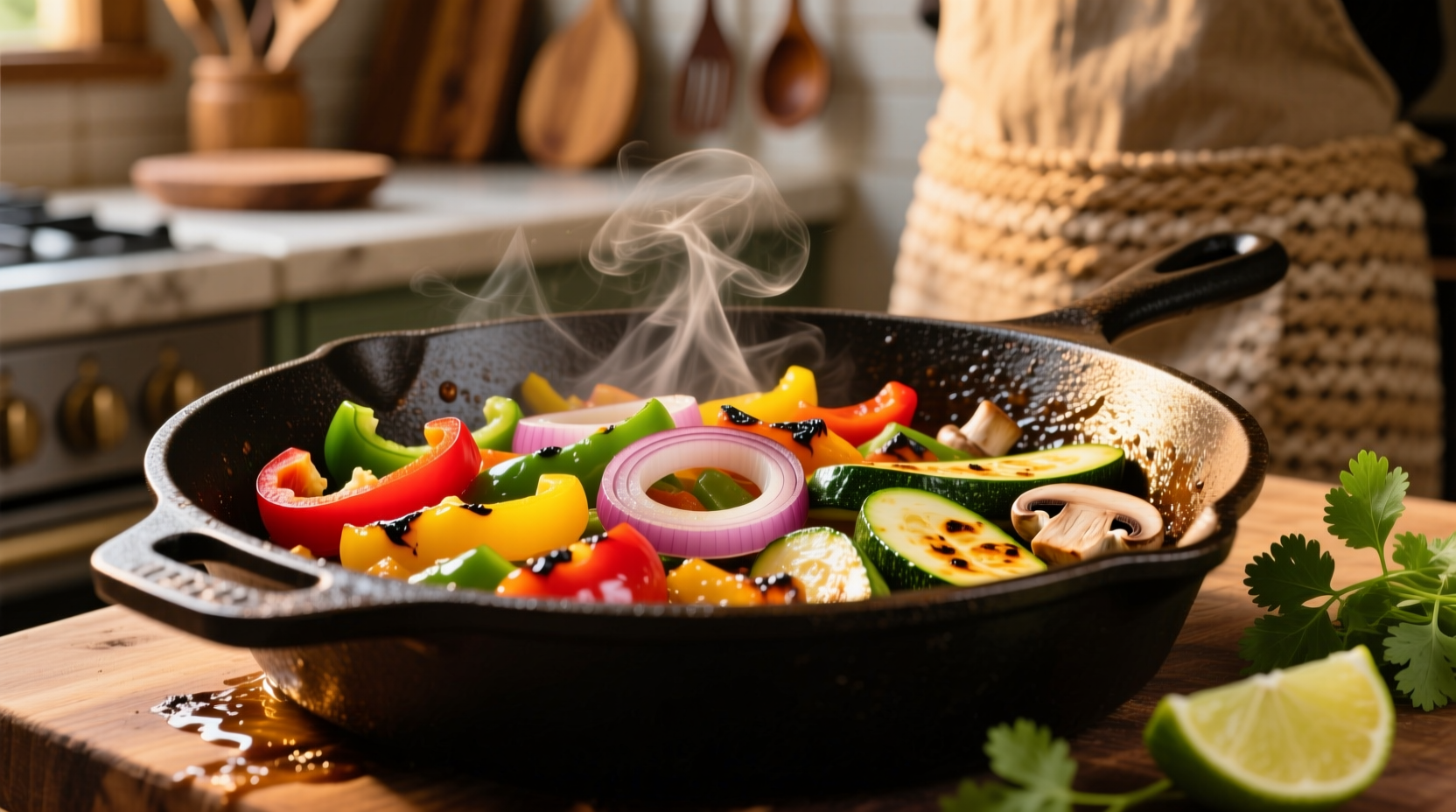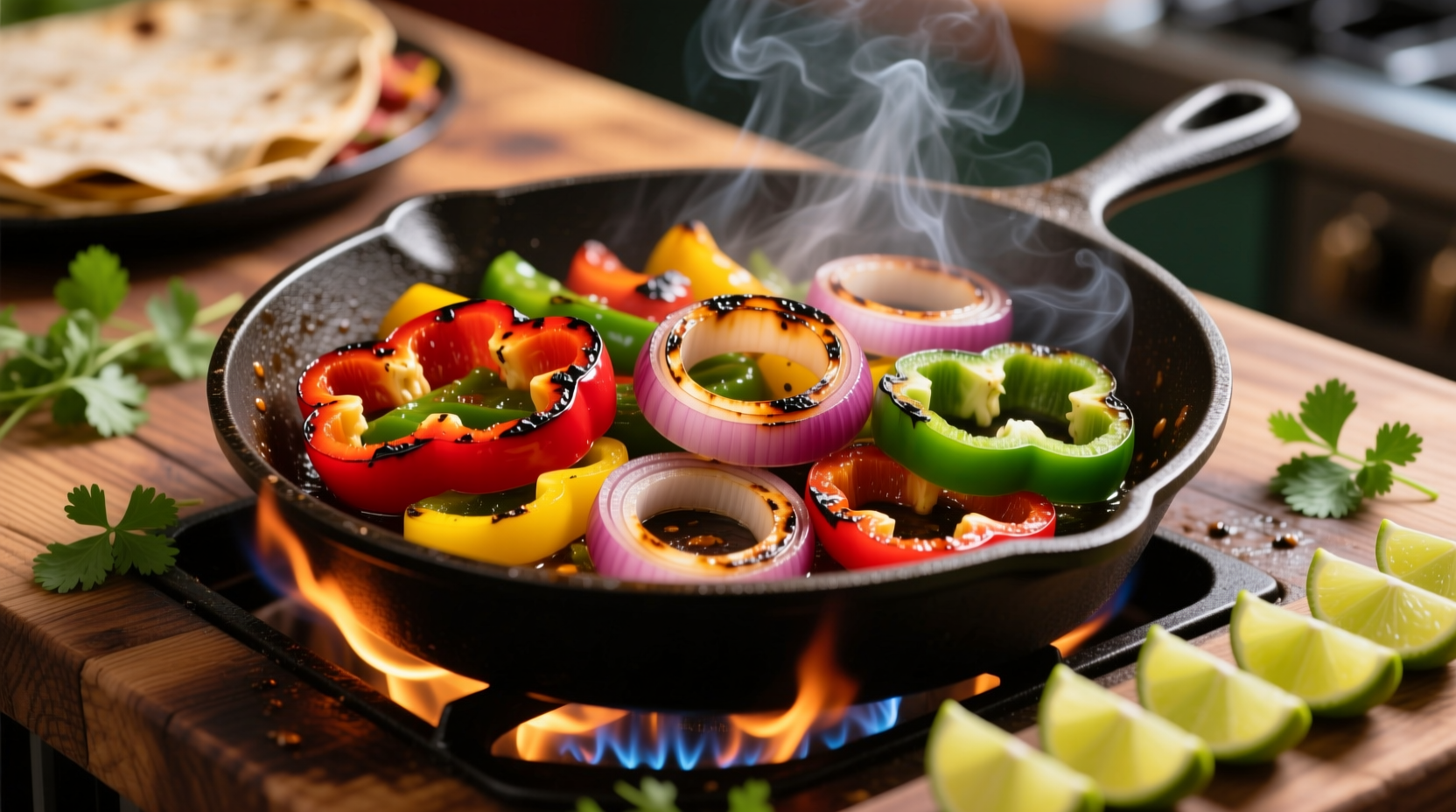Why This Fajita Vegetable Method Works
Most home cooks struggle with soggy or unevenly cooked fajita vegetables. The secret lies in understanding vegetable chemistry and heat management. When bell peppers and onions hit extreme heat (400°F+), they undergo the Maillard reaction while retaining crispness through controlled moisture release. As Maya Gonzalez explains from her decade of Latin American culinary research: "Traditional fajita preparation separates vegetable cooking stages - onions first, then peppers - because they release moisture at different rates."

Essential Ingredients & Equipment Checklist
Before you start, gather these components. Quality ingredients make the difference between bland and brilliant fajita vegetables.
| Vegetable Type | Best Variety for Fajitas | Flavor Profile | Cooking Time |
|---|---|---|---|
| Bell Peppers | Thick-walled (red/yellow) | Sweet, caramel notes | 5-7 minutes |
| Onions | Red or white onions | Sharp to sweet transformation | 6-8 minutes |
| Mushrooms | Crimini or shiitake | Earthy umami boost | 4-5 minutes |
This comparison comes from the USDA's Vegetable Preparation Guidelines which details optimal cooking times for preserving nutrients while developing flavor. Notice how different vegetables require precise timing - this explains why mixing everything in one batch leads to inconsistent results.
Prep Work That Makes All the Difference
Proper preparation sets the stage for perfect fajita vegetables. Follow these professional techniques:
- Uniform slicing: Cut peppers and onions into 1/4-inch thick strips. Consistent size ensures even cooking
- Dry vegetables thoroughly: Moisture prevents proper searing - pat dry with paper towels after washing
- Preheat your pan: Allow cast iron or heavy skillet to heat for 5 minutes before adding oil
- Spice timing matters: Add dried spices when vegetables are 75% cooked to prevent burning
According to food safety guidelines from the FDA Food Code, vegetables should reach 145°F internal temperature for safe consumption, though visual cues are more reliable for fajita vegetables. Look for slightly charred edges with vibrant color remaining.
The Cooking Process: Step-by-Step
Follow this sequence for restaurant-quality results every time:
- Heat 1 tablespoon avocado oil in cast iron skillet over high heat (medium-high for electric stoves)
- Add onions first with pinch of salt to draw out moisture - cook 3 minutes until translucent
- Add peppers and mushrooms, spreading in single layer without crowding
- Cook undisturbed for 2 minutes to develop char, then stir occasionally
- When vegetables reach 75% doneness (about 5 minutes), add spice blend
- Cook 2-3 more minutes until peppers are crisp-tender with slight char
- Remove immediately from heat to prevent carryover cooking
Avoid these common mistakes that ruin fajita vegetables:
- Overcrowding the pan: Causes steaming instead of searing - cook in batches if needed
- Adding spices too early: Dried spices burn at high heat, creating bitter flavors
- Stirring too frequently: Prevents proper caramelization and char development
- Using low smoke-point oils: Extra virgin olive oil burns at fajita cooking temperatures
Serving & Customization Options
Traditional fajita presentation enhances both flavor and experience:
- Serve immediately on a preheated cast iron platter for dramatic presentation
- Pair with warm corn or flour tortillas, guacamole, and pico de gallo
- Add protein: grilled chicken, shrimp, or carne asada complement the vegetables
- Dietary modifications: use tamari instead of soy sauce for gluten-free option
For meal prep success, store cooled vegetables in airtight containers for up to 4 days. Reheat in hot skillet rather than microwave to restore texture. Leftover fajita vegetables transform omelets, grain bowls, or quesadillas the next day.
Troubleshooting Common Issues
Fix these frequent fajita vegetable problems:
- Soggy vegetables: Pan wasn't hot enough or vegetables were overcrowded - cook in smaller batches
- Burnt spices: Added too early - wait until vegetables are mostly cooked before adding dried spices
- Lack of flavor: Not enough salt or acid - finish with lime juice and additional salt to taste
- Uneven cooking: Inconsistent vegetable size - use mandoline for uniform slices
Professional chefs follow the Mexican culinary principle of "less is more" with fajita vegetables. As Maya Gonzalez discovered during her field research in Jalisco, "Authentic fajita vegetable preparation uses just five core ingredients: peppers, onions, garlic, cumin, and lime. Complexity comes from technique, not ingredient quantity."











 浙公网安备
33010002000092号
浙公网安备
33010002000092号 浙B2-20120091-4
浙B2-20120091-4